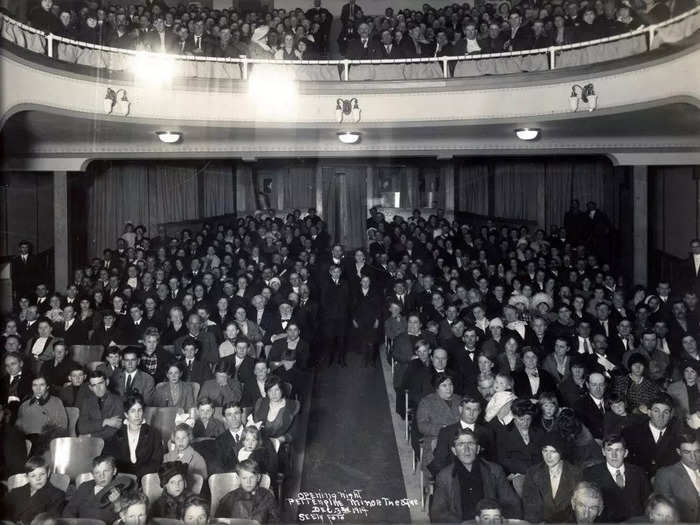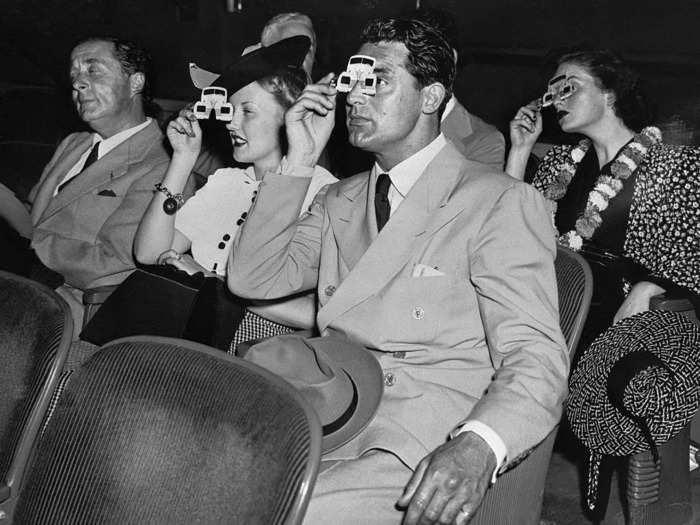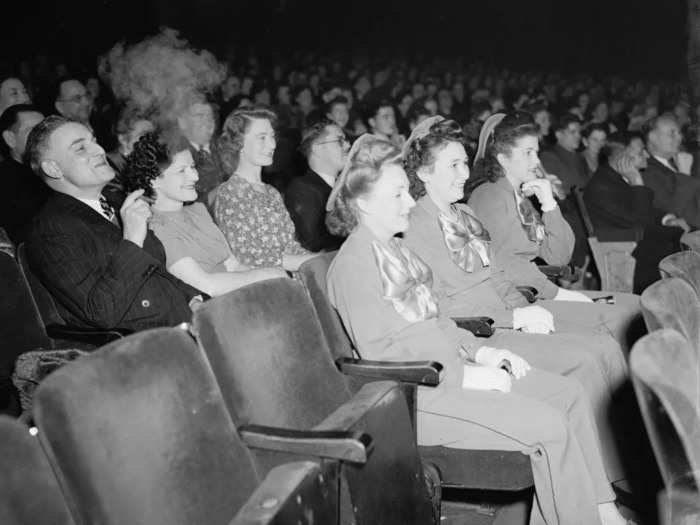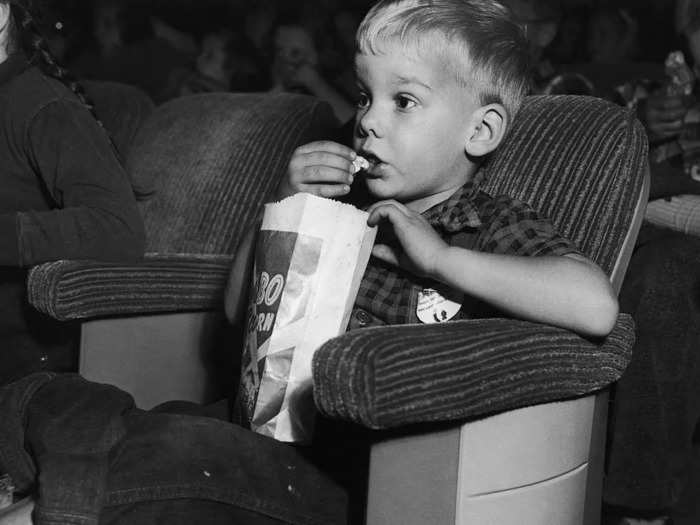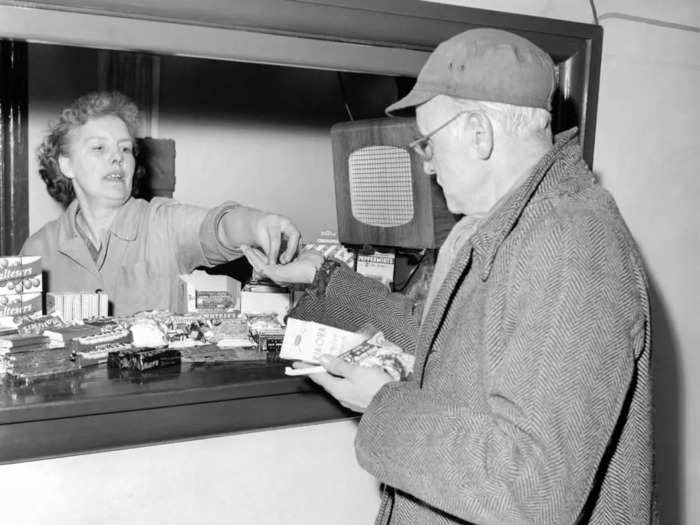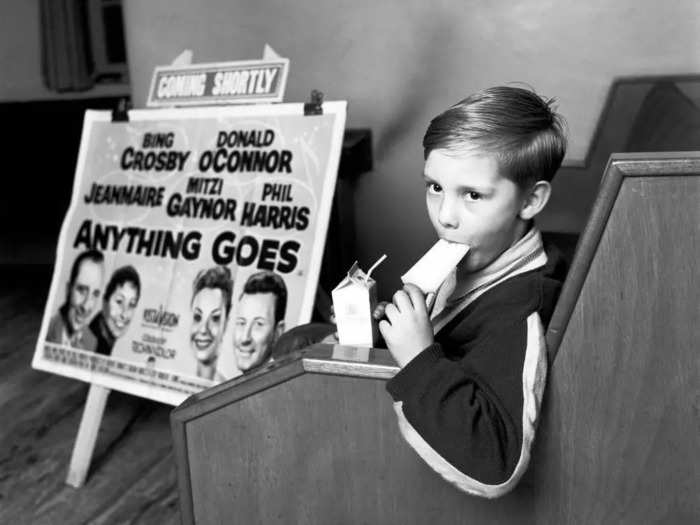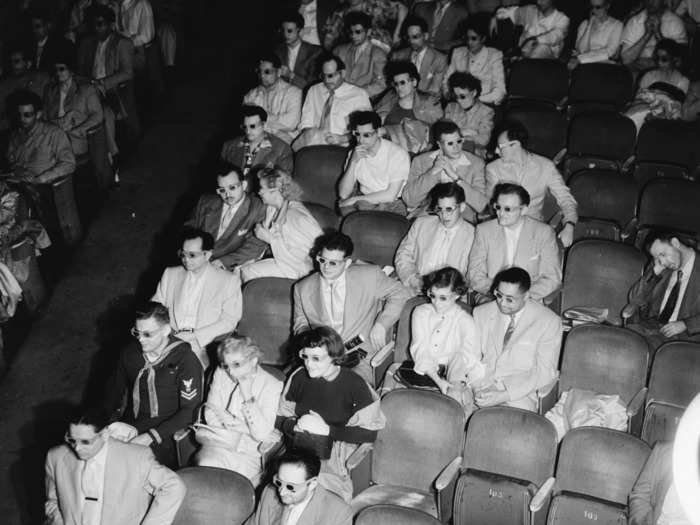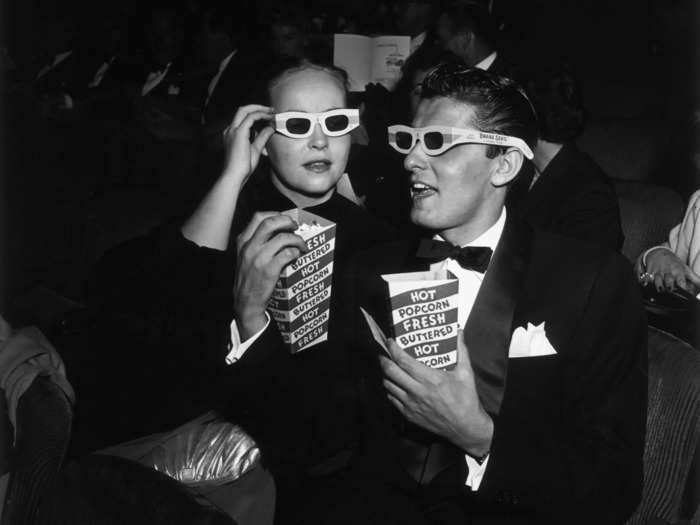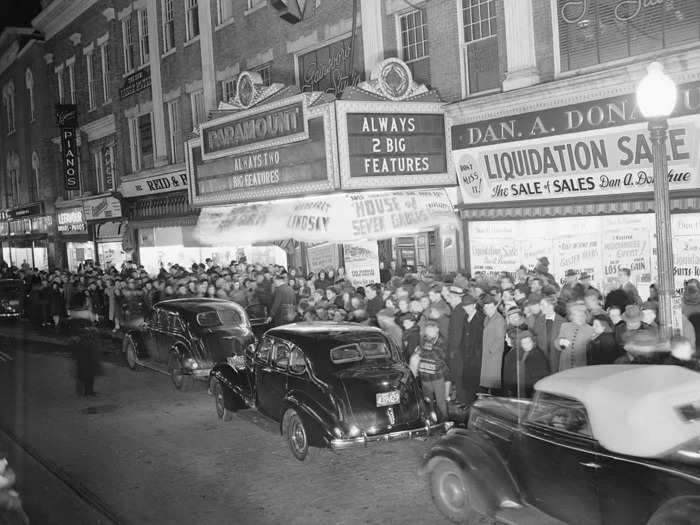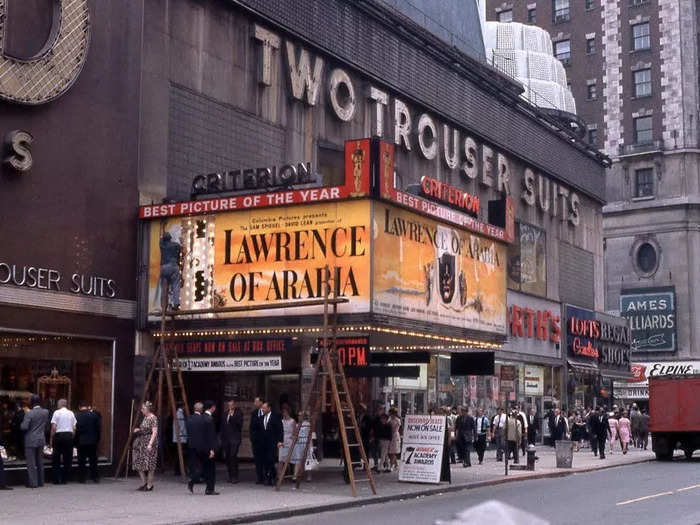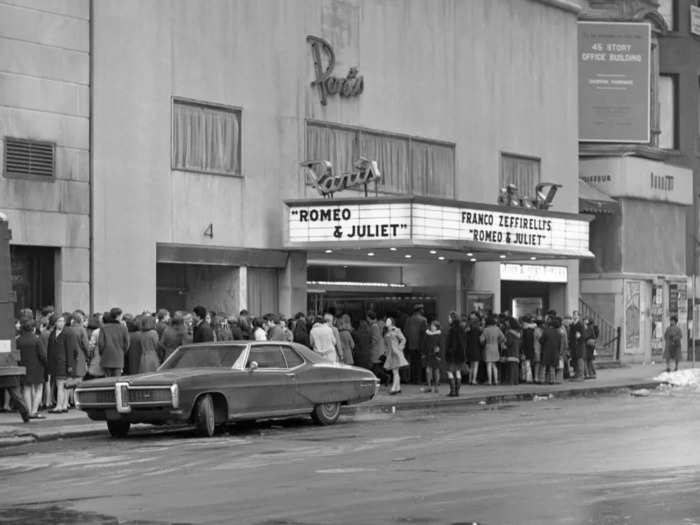A line of people wait for tickets at a movie theater's boarded-up box office in New York in the 1950s.Weegee(Arthur Fellig)/International Center of Photography/Getty Images
- A night out at the movies used to be a glamorous affair.
- The year's biggest blockbusters actually had people crowded outside the theater doors.
In a time before streaming services and multiplexes dominated the entertainment industry, people would sit back in velvet-covered chairs in glamorous theaters to catch a movie.
From blockbusters that actually had people wrapped around the block to the first 3D movies, these vintage photos show how going to the movies has changed.
Here's what it was like to go to the movies during the golden age of cinema.
Movie theaters as we know them have been around for more than a century.
The opening night of Pettengill Minor Theatre in Arcata, California, in 1914. Nextrecord Archives/Getty Images
The first modern movie theaters opened in the late 1800s. The first permanently built movie theater was Tally's Electric Theater, which opened its doors on April 2, 1902, in Los Angeles, California, the Times Union reported.
By the early 20th century, going to the movies was a popular pastime.
Most movie theaters in the early 1900s only had one screen, so only one film could be shown at once.
Before the 1920s, movie theaters were seen as a low-class pastime.
Cary Grant and Phyllis Brooks at the Polaroid movie in the Chrysler Building at the New York World Fair in 1939. Bettmann/Getty Images
However, movie theater owners wanted to change this reputation to attract a more upscale clientele.
Some theaters were grander and more ornate than others, and going to the movie theater was an occasion people dressed up for.
People watch a movie in 1946. George Konig/Getty Images
Many theaters, called "movie palaces," featured stunning interiors with carved ceilings, luxurious seats, and expensive carpets.
Visitors wore their best clothes to attend the movies and were often pictured wearing top hats, coats, and other glamorous attire.
Popcorn has been a popular movie-watching snack for decades, but it wasn't always allowed.
A young boy eats a bag of popcorn while attending a Saturday matinee at the movie theater in 1954. Josef Scaylea/Getty Images
While popcorn was a popular treat at entertainment sites like circuses and fairs in the late 1800s, movie theaters didn't allow the food to be sold because they wanted their venues to appear more upscale.
However, during the Great Depression, once-prestigious movie theaters began selling popcorn to appeal to wider audiences.
You could also grab other snacks at the concession stand, like candy and Cracker Jack.
A man pays for concessions at a movie theater in 1956. Reveille/Mirrorpix/Getty Images
Gradually, hot foods like hot dogs and soft drinks were also available to moviegoers, making the movie theater a one-stop destination for dinner and entertainment.
In the early years of cinema, few movies were specifically targeted at younger audiences.
A young boy eats a popsicle at a movie theater in 1956. Reveille/Mirrorpix/Getty Images
Before the mid-20th century, children accompanied by their parents would have to choose between family-friendly or more adult-oriented films.
However, the rise of animated feature films from studios such as Disney meant that kids became a target audience for many filmmakers.
Today, there's a wide range of animated and live-action movies specifically meant for younger audiences to enjoy.
The drive-in movie theater was introduced in the early 1930s and soared in popularity over the next two decades.
A drive-in movie cinema in Los Angeles, circa 1930. Popperfoto/Getty Images
Drive-ins spiked in popularity after World War II with the introduction of newer technologies that allowed people to hear the sound from the movie through their car radios.
Throughout the 1950s, drive-in theaters were popular date spots, as couples could get maximum privacy, and they became a hallmark of American culture thanks to popular movies like "Grease."
By the mid-1960s, there were some 5,000 theaters across the country.
The introduction of 3D movies revolutionized the film industry yet again, though it was more of a novelty.
A cinema audience wearing 3D glasses in 1940. Weegee(Arthur Fellig)/International Center of Photography/Getty Images
Though 3D movies have been around since the 1920s, they grew in popularity in the 1940s and '50s.
People would wear glasses with transparent red and green lenses to see the 3D effects.
Two people attend a 3D movie in 1952. M. Garrett/Murray Garrett/Getty Images
Today, most 3D glasses have black lenses, rather than the traditional red and green.
People wrapped around the block to catch the latest hit movies.
Crowds gather outside a theater for the premiere of "The House of Seven Gables" in 1940. Bettmann/Getty Images
The term "blockbuster" comes from a World War II phrase referring to a bomb capable of destroying an entire city block.
However, in the golden age of Hollywood, the phrase also came to describe a successful, high-budget movie that could attract a large audience.
Movie theaters used to advertise the latest films on their marquees, lit up in bright lights.
An exterior shot of the Criterion Theater marquee featuring "Lawrence Of Arabia" in the heart of Times Square, Manhattan, in 1963. Scott McPartland/Getty Images
In the photo above, the Criterion Theater in Times Square advertised a showing of "Lawrence Of Arabia" in 1963.
The Paris Theater in New York City opened its doors in 1948 and is still around today.
Large crowds of people gathered outside the Paris Movie Theater on 58th Street in Manhattan to see Franco Zeffirelli's "Romeo and Juliet" in 1969. Scott McPartland/Getty Images
Though the single-screen theater has faced threats of closure in recent years, the Paris remains a landmark of cinema history in New York City and has evolved to keep up with changing tastes.
In 2019, the Paris was purchased by Netflix, which has refurbished the theater and used it to showcase its movies.

